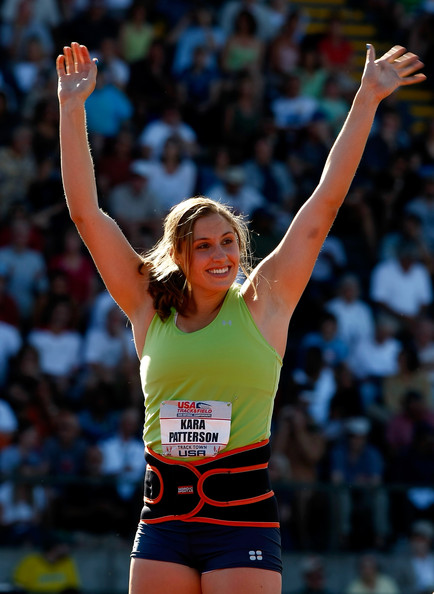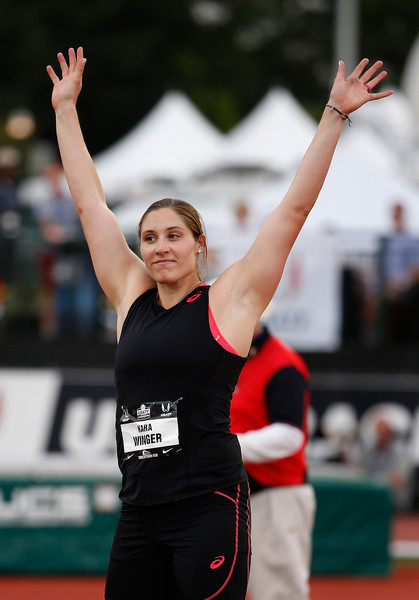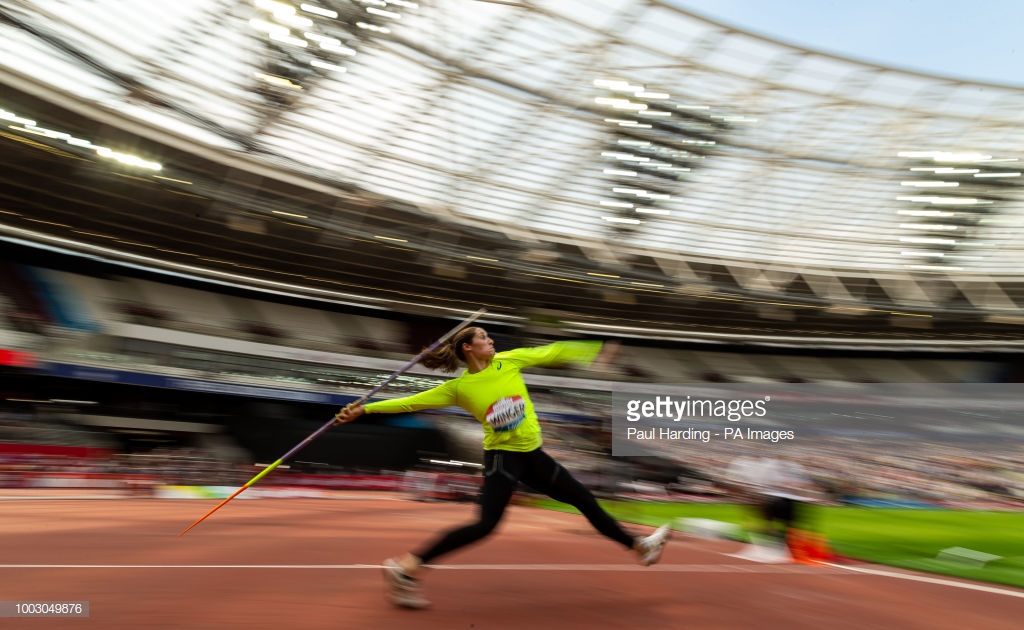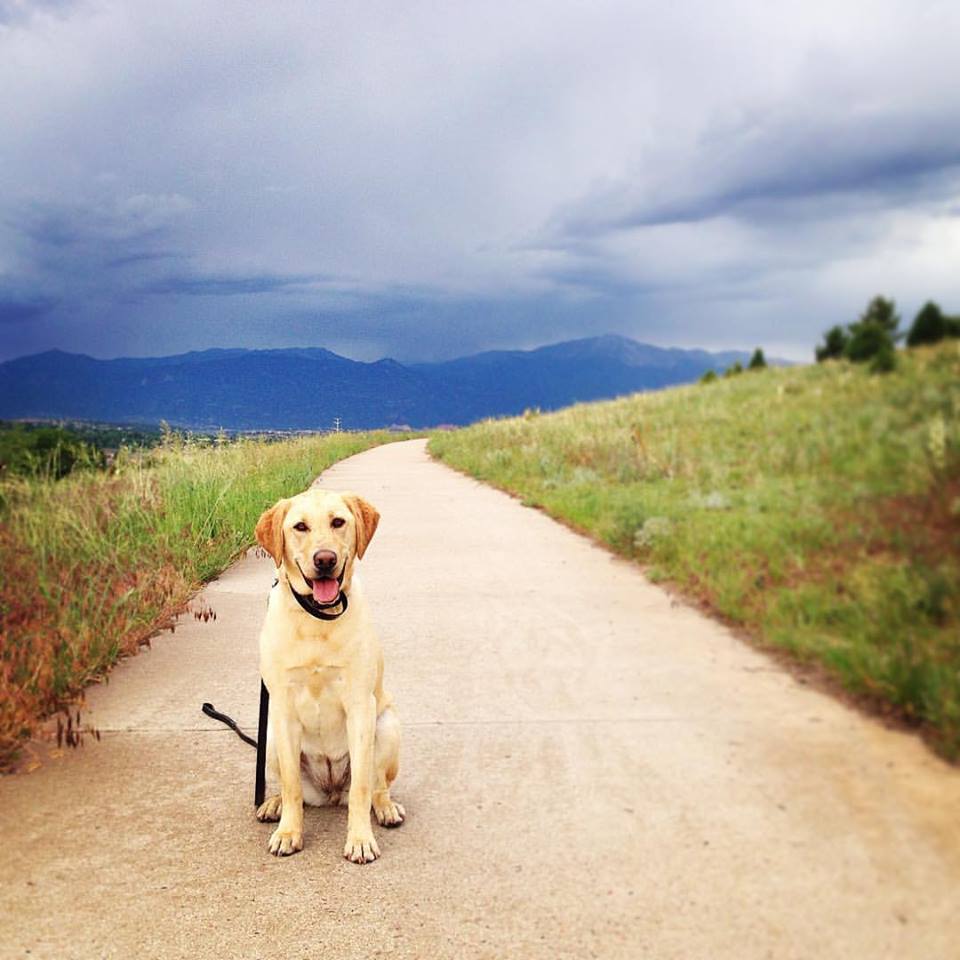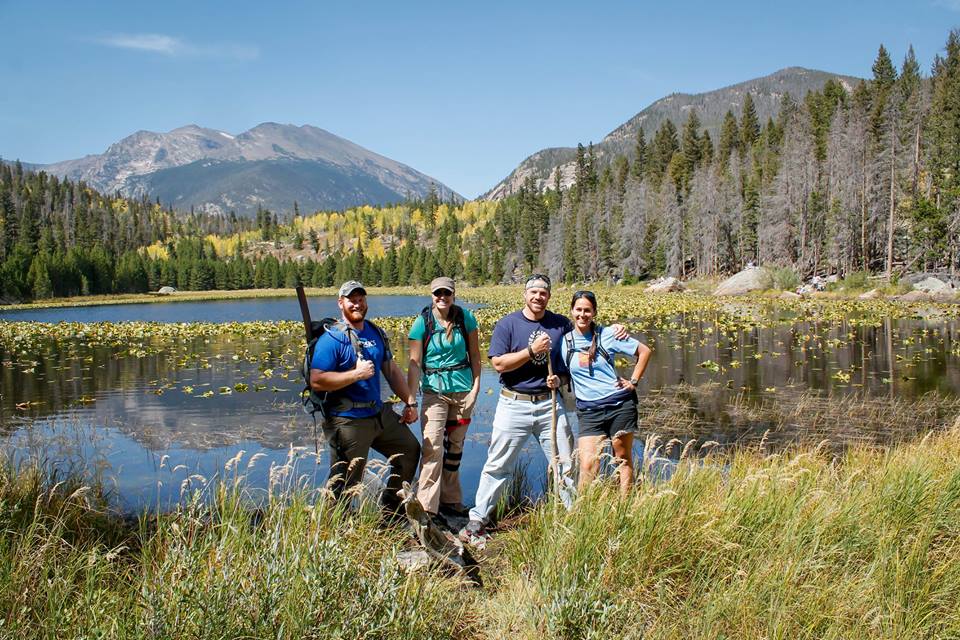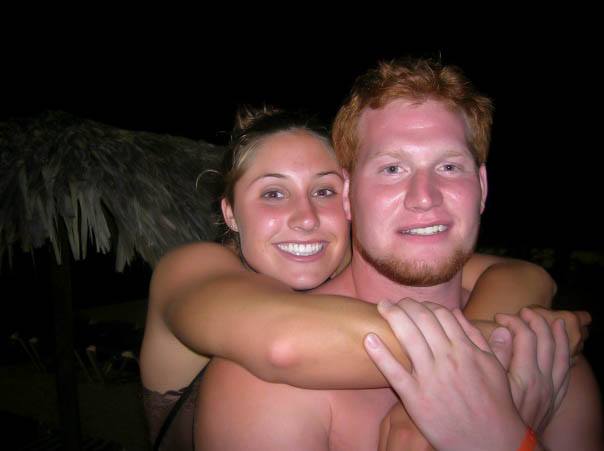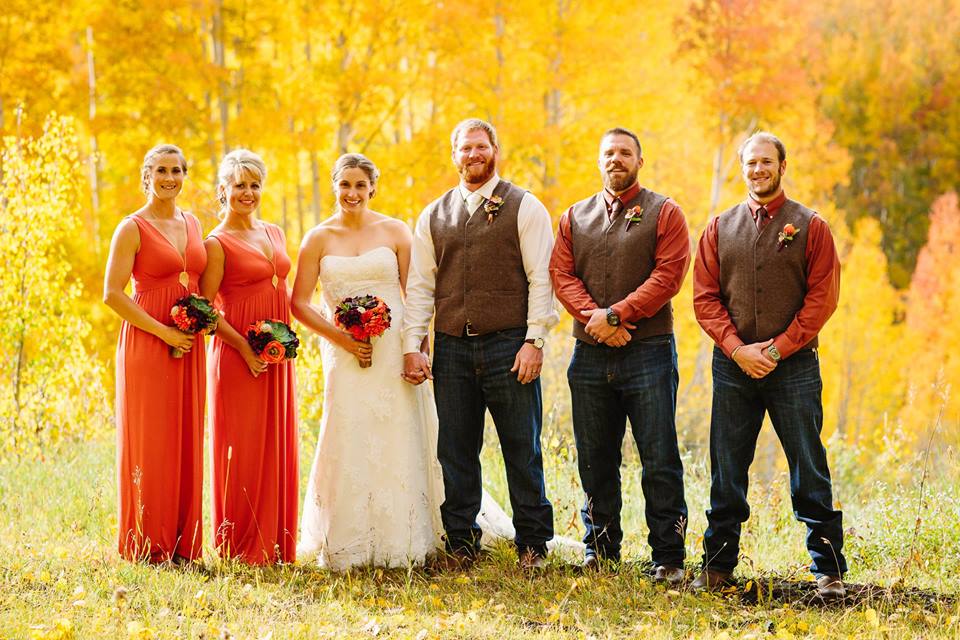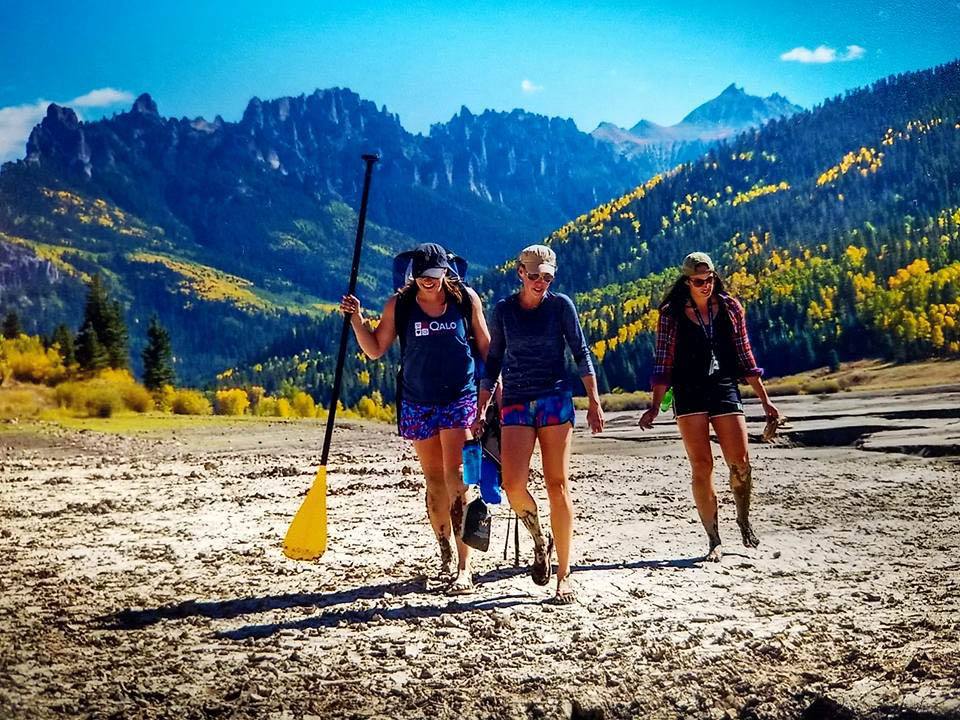Big picture item:
Self-reflection is important. Be honest with yourself about where you can improve. You’re not perfect.
Part two of My Athletic Journey will cover the professional part of my career, including USATF National Championships in 2009. Again, I’ve told my “life” story many times, and the chronology of it is available in other areas of the internet, so I want to talk about stuff that has happened to get me here through a current, overall lesson lens.
In Part One, I mentioned my major back injury in 2007, and how the recovery and core strength gains I made changed me for the good and, from where I’m sitting, put me on the 2008 Olympic Team. Injuries are opportunities, and that has absolutely been true in my professional career.
Russ and I moved to Chula Vista the Fall after I graduated from Purdue (2009). In February-ish, Mike and I were doing some testing: Overhead forward shot throws as far as we could. Something felt really weird, and after some tests, I was told that I sprained a facet in my thoracic-lumbar junction (a bony vertebra process right in the middle of my back). I had excruciating pain if I tried to arch after that. My previous injuries were either overuse or things that had clear protocol to heal, and then I did this traumatic thing that didn’t seem to respond to anything but rest, and sometimes not even that. I didn’t throw for a month. Nothing seemed to work. I finally tried a fantastic sports acupuncture clinic in Ocean Beach, and the season was saved! I opened at 61.80m at the end of April, the second-best throw of my career at that point. I learned that rest is best and patience is worth it, and to be my own self-advocate as far as looking for new therapies sometimes. I also learned things about risk vs. reward in training programs (how to train smart). Do I need to measure a heavy overhead forward shotput throw? Probably not then, and definitely not anymore.
I tore my left anterior cruciate ligament at the Olympic Trials in 2012. In September, I went under the knife for my first ever major surgery: A bone-patella-bone ipsilateral ACL reconstruction. I had no idea what I was in for. No one could have prepared me for the weird physical extreme discomfort that surgery and the healing process can bring. Becoming accustomed to the sensations that accompany getting range of motion back and breaking up scar tissue is very weird. Trusting that things that feel completely abnormal are normal takes practice. I had never done lower extremity exercises beyond regular exercise before (no one ever taught me how NOT to tear my ACL), so the process of teaching my glutes how to fire and learning how my knees should move was incredibly rewarding. Realizing how deficient I had been in certain areas made me see the rest of my body differently too, and helped me focus on the details of training moving forward to protect my health. Rehabilitation-based exercises will give me confidence in throwing for the rest of my career.
In 2015, I was having the time of my life in the first half of the season. I threw 66.47m in May and won USAs with a big series for me and 64.91m. Then, my left shoulder was torn just after nationals. I may have had existing rotator cuff damage, but something beyond my control tore my labrum, and the rest of my season suffered. I managed to get 8th at World Championships and silver at PanAm Games, but the pain in my left shoulder prevented me from having much length in my right arm, and was a huge, painful negative in a lot of my training. Making the decision to have surgery to fix it in October 2015 put the Rio Olympics in jeopardy for me, but I knew how bitter I was becoming about the injury. That simply wasn’t good for my overall wellbeing, and I also knew that I couldn’t accomplish what I dreamed of while feeling how I did (physically and mentally). My 13th-place finish in Rio is still painful, but I know that I did my best with what I had. My entire left shoulder saga was a big lesson in the fact that life is sometimes not fair, but that we have control over our attitudes and actions.
My last little injury story is about the Spring of 2016. I drove home from Austin in early April, and somehow managed to impinge both a fat pad in my left knee and my right shoulder. I know the shoulder is from my right and left sides playing tug-of-war in my surgery recovery process, but the knee made any kind of explosive movement really painful, too. They were both fairly minor things, but also both prevented normal training for a while, and forced me to cancel plans I had made to compete in May. I’m glad. We adopted Maddie the Dog at the beginning of May, and I got to spend a solid seven weeks with her, bonding and helping her adjust to her new home (her third and forever one, but she didn’t know that at the time and was nervous). If I hadn’t been forced to rest, our bond might not be so close, and that’s irreplaceable to me. Family first.
PanAms 2015
note L shoulder KT tape.
Something I’ve been reminded of again in the last year or two is that change is my friend. New situations and ideas are stimulating, I think to everyone. I’ve never perceived change as stressful though, even when it maybe should have been.
Some Universities send their freshly-graduated seniors to USATF National Championships (eligibility is up, but they pay for the trip and often the athletes wear the school uniform). Not so with Purdue, which is fine, but was also scary at the time. I traveled with Russ to Eugene in 2009, but we stayed separate from each other (he with Adam, me in the Springfield Motel 6 alone). I borrowed my Mom’s car and drove it from Vancouver to save as much money as possible. My coach wasn’t with me. I had the craziest, most inconsistent series of my life, but I also PRed by 2.5 meters and started my post-collegiate career off with a second senior national championship. Relying on myself, it turned out, was scary but also awesome.
After one year of training with Ty Sevin as my coach, Jamie Myers as my strength coach, and Mike Hazle as my training partner, I experienced the magic of my 2010 season. A thrower’s first post-collegiate year is “supposed” to be really hard, but living in Chula Vista, where my then-boyfriend Russ also felt supported and motivated, prioritizing the thought process that 2010 WOULD be successful despite the odds, and finally getting enough sleep after college translated to all that change meaning amazing results and experiences.
The 2015 season might’ve ended with a surgery, but it was also fantastic in a lot of ways, because it was the first year I was fully back from ACL surgery (I competed in 2013 and 2014, but wearing my knee brace both seasons and with tentativeness). Going through a period of basically 2.5 years without a true full-on javelin throw and then having the success that I did at the beginning of 2015 blew my mind. I felt like a new thrower, because I kind of was after all that rehab and patience. I also had a new name, and similar to the stigma that the first year out of college is difficult, many throwers have struggled in their first season after tying the knot. Russ and I were fully aware of that, and vowed to each other that the Wingers would succeed in 2015. We both medaled at PanAms, won NACAC Senior Championships 9 years after we met at NACAC U-23’s, had great USAs performances, and roomed together at Worlds (and I, by no coincidence, had my best performance at a major).
Jamie Myers is my fantastic strength coach of almost a decade and reliable, honest friend. He has been my training and competition sounding board for as long as he has been in my life. So, when I was fairly devastated at the end of the 2017 season, having a debriefing conversation intermingled with motivated musings from both of us got me excited about the future again. We talked about how there is always room for improvement, for anyone, and that Dana Lyon, my good friend of 14 years, might be the perfect fit for a new technical coach. She was and is. Jamie and I discussed and continue to discuss shifting focus to exercises that actually address issues that I have and impact javelin performance rather than too much general stuff. It’s so fun to continually adapt. This felt like a huge leap, as it meant taking a lot more of an active role in planning my training than I ever had, and I had to practice that to be confident in it. It was a lot easier for me to trust Jamie and Dana than myself in the beginning of this new coaching and training process, but I absolutely love our teamwork now, and we all wholeheartedly believe in my abilities. It’s super fun to be reinvigorated by them.
That last bit leads me to the idea of finding your keepers. Build a community that continues to show up. People who make it obvious that they like you and want to be part of your life in positive ways. It helps a lot if you do that for them, too. Russ loved me through some of the hardest things I’ve had to deal with, and helped me grow enormously in ways outside of athletics. Dana had already been popping into my USAFA practices for five years before I asked her to coach me, and has always been a light in my life. When I found out I tore my ACL, Jamie and Maggie (his wife, my lovely matron of honor) were my first friends who knew and comforted me with quality time together, since Russ was out of town. Chris Garcia has been an incredible resource and enthusiastic supporter ever since I first met him in 2011. There are many more on the personal side. Recognizing these keepers shouldn’t be difficult with just a little bit of self-reflection. Is it easy to be around them? Do you feel motivated to be better when you leave them or talk together? Is there enough laughter? It’s okay to have great relationships with the people you work with. You also have to learn to deal with people you don’t like, but your inner circle should inspire you, and probably vice-versa. Lift each other up.
One of the specific questions I got about this phase of life was, “How do you balance the need for income while training professionally?” As the need for income as an adult is a real thing that everyone deals with and a necessary factor in anyone’s journey through life, it feels appropriate to address that a little in this blog. Without income, I wouldn’t have been an athlete for close to a decade now. I sort of attempted to answer this question (about the business of track and field) in a podcast I recently participated in. This world of sponsorship, ambassadorship, prize money, and donations from family and fans/supporters is difficult and ever-changing, but can be a really fun challenge. The true answer to this question is that I never expected to make money as a professional javelin thrower, but I have. Part 2 of that answer is that I am very careful with my money, and have saved and invested a good chunk of it. I’ve had a couple of really good contracts and a couple of pretty good prize money years, and the way I treated that income fuels the thinner times. I’ve always been aware that income in this sport is fairly unpredictable (and had a few good mentors to clue me into that fact), so my strategy has been to support myself between income opportunities by saving. I don’t ever want to be unable to train the way I know works for me because I’m frantically running out of funds. So I save, and I hustle.
Changing my training in 2018 to a lot fewer hours per week means that I have more time to devote to other projects. Some of those generate income, while others might in the future. In the same way that change doesn’t cause me stress, a lack of consistent income doesn’t necessarily either, but that is only because I am just comfortable enough with how I save money when I have it coming in in bigger quantities. I am the perfect amount of comfortable financially and motivated to continue attracting income opportunities. I also enjoy compartmentalizing my life in this way: Training is when I’m fully devoted to just getting better, and the other hours in the day are spent working to support that time (and spent with Maddie the Dog). I’m a huge fan of people who work full-time and also compete in track and field. If I had to do that, I would embrace the challenge. Many people with “real” jobs work out regularly, so if your training is focused enough, what really is the difference? You can pursue multiple dreams at the same time, you just might need to be a really good communicator. Which I think we all should strive to be. But that’s another blog.
I would be remiss if I didn’t credit the USOC and USATF for at least some of my financial stability. I have been part of the USATF Resident Athlete program at both the Chula Vista and Colorado Springs Olympic Training Centers for the entirety of my professional career. Training facility and sports medicine costs can be huge reasons that athletes (especially in the throws, I think) don’t last very long after college. I’m very grateful for these two organizations for lifting that burden for me. The coaching staff at the United States Air Force Academy has been very generous with their facilities and welcoming attitude for six years as well!
Again, rapid-fire answers to the original question to wrap up!
“(College graduation) to present, how you became the athlete you are now, the steps that you took.”
1. Be brave. I had no idea what this career would look like or how far it would go, but I was willing to embrace progress over perfection.
2. Continually check in with and perhaps re-set goals. What’s working? What’s not? Has progress been completely derailed by injury? What goals can you set within that new framework?
3. Have a companion. I can’t put into words how much I love my husband and his role in my career. (This doesn’t have to be a romantic relationship, but mine is.)
4. Keep having fun. This is related to checking in with goals. Enjoyment and passion should be goals, IMO.
5. Celebrate. Too many people just bore through some of the things that should enrich life. The little moments are the big moments!
6. Check your own ego. Javelin will humble you. Starting over is an opportunity to start better.
7. Do something else, too. I didn’t realize how much I missed having other things in my life until I went to grad school. Grow in other ways alongside athletics.
8. Take care of your body. Stretch a little every day. I go to the public gym just to go in the hot tub and steam room some days. Get as much sleep as you can. Recovery is everything.

